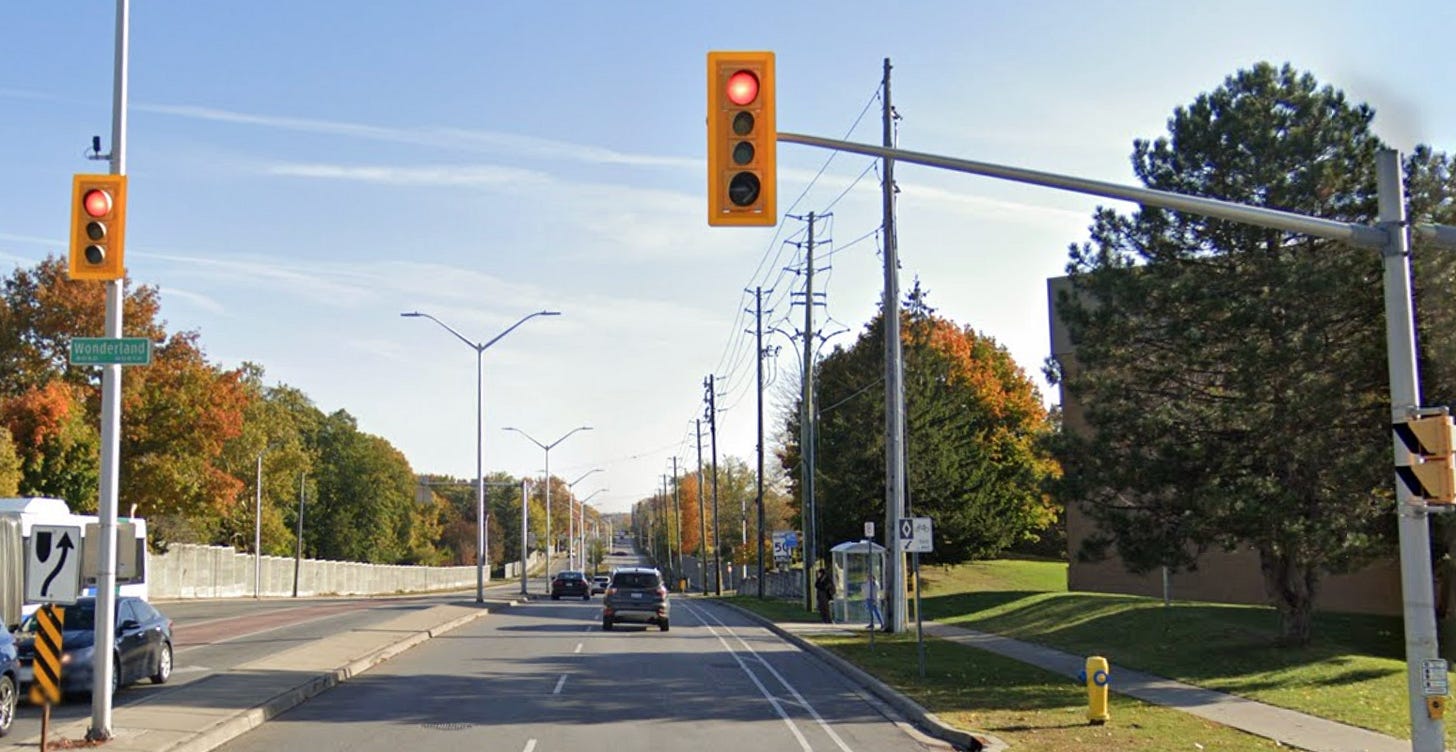I would like to express my appreciation to Jerry Schippa for his insightful response to my recent post on pedestrian push buttons (To Beg or Not To Beg?). He shared some intriguing strategies being implemented in his traffic signal treatment efforts, shedding light on the concept of "Rest-In-Red" (RIR) traffic signal operations - an idea that, until now, hadn't crossed my mind. RIR operations are when the traffic signal remains red in all directions until a green phase is called for by some vehicle or pedestrian. In this post, we will consider the history of this concept, its potential applications in the present day, and the considerations that come with it.
Learning from the Past
Upon further investigation, I noted that RIR traffic signal operations weren't a new idea and had been tested in May 1976. A pilot corridor was established, with the results published in 1977. While I was unable to find the original publication to examine the research in more detail, I did find the abstract on the TRB website that provided some basic commentary. The research was conducted with the aim of traffic speed management through the use of RIR operations.
The study generally found that several traffic controllers (computers) were set up along a corridor with induction loops to test the RIR treatment. The corridor’s performance was evaluated in terms of speed, capacity, delay, collisions, reliability, and cost. The study demonstrated that RIR operations could be used to significantly and safely reduce average speed within 180 metres approaching and departing the traffic signal. The reduction in collisions was not significant, likely because the collision rate was already low, and the cost of installation was not justified by traditional cost-benefit comparisons.
It is noted that RIR operations could be used as an alternative traffic management tool to control speed safely under certain conditions. Lastly, the study noted that selective conversion of existing signals meeting specific criteria may be expected to produce desirable results at a relatively low cost.
Adapting to Present-Day Technology
Over 50 years have passed since that pilot study, traffic signal technology has evolved significantly. Sensor systems have progressed beyond loop detection, now encompassing radar, lidar, video, and other advanced methods. However, implementing RIR with loop detection would likely have limitations, particularly regarding the distance at which the system can effectively operate.
Considering high-speed roads, careful examination and detailed criteria are necessary for effective implementation. In contrast, major arterial corridors with speeds of 50 to 60 kilometres per hour may benefit from forward-firing radar or similar video systems, especially during lower-demand times such as overnight.
Benefits for Side Streets and Pedestrians
For drivers, the approach on the side streets of arterial corridors could mean shorter wait times during lower-demand periods. As opposed to stop bar detection, which would require more stop-and-go operations for vehicles (including wear and tear on braking systems), longer-range detection allows for the anticipation of the vehicle’s arrival, changing the signal to green before the vehicle needs to significantly slow down unless another signal phase is already green.
This approach also benefits pedestrians, particularly on side streets. In a RIR scenario, the moment a pedestrian pushes the button, a pedestrian phase initiates relatively quickly, minimizing waiting times.
Challenges and Considerations
There would be obvious challenges to overcome in any RIR implementation. This would be seen particularly experienced with semi-actuated operations (i.e. no sensors on the main street) and potential sensor failures in general. Upgrading sensor systems on main streets with little to no detection may incur significant capital costs.
A more detailed examination is warranted for traffic signals with adaptive timings that likely have enhanced detection sensors, especially during overnight operations. However, the effectiveness during daytime hours, when main street and competing demands are high, remains uncertain as these higher demands would not allow for a RIR scenario for any significant length of time.
Conclusion
The concept of RIR traffic signal operations is intriguing, yet its applicability requires careful consideration. Engineers must perform due diligence to avoid unsafe conditions and public confusion. Although a valuable thought exercise, implementing such changes should prioritize safety and clarity to uphold the dynamics of how people interact on our streets. In my mind, this will remain an intriguing thought experiment but I will need to see more empirical evidence of its benefits before a RIR treatment could be recommended in select circumstances.
Have you ever heard of or considered Rest-In-Red (RIR) traffic signal operations before? If so, what are your thoughts or experiences with the concept?





